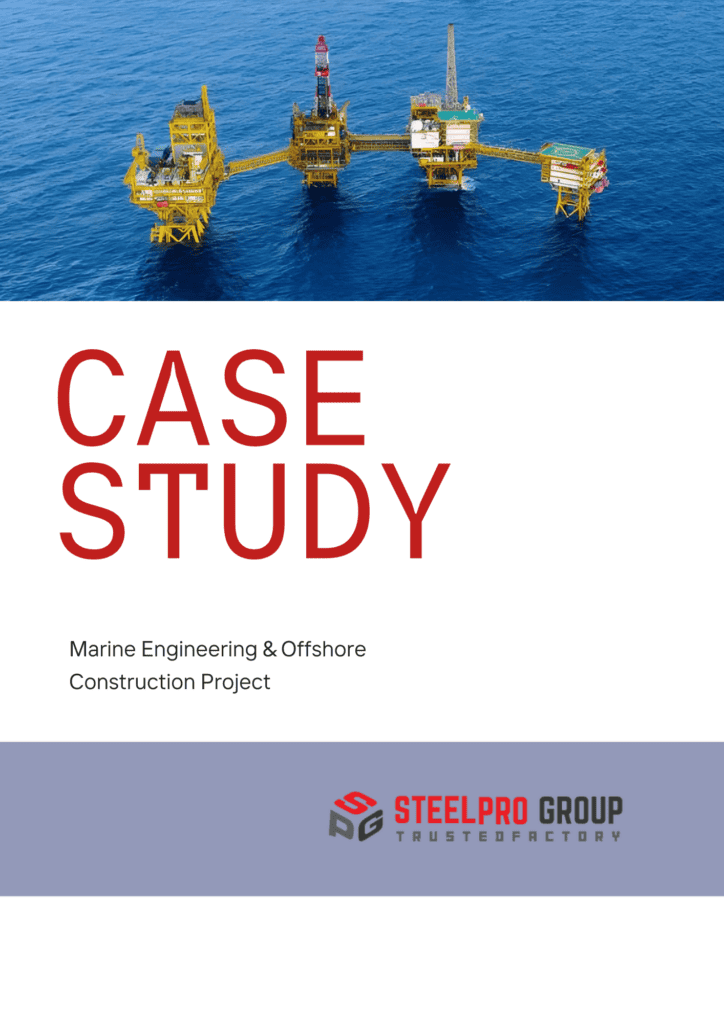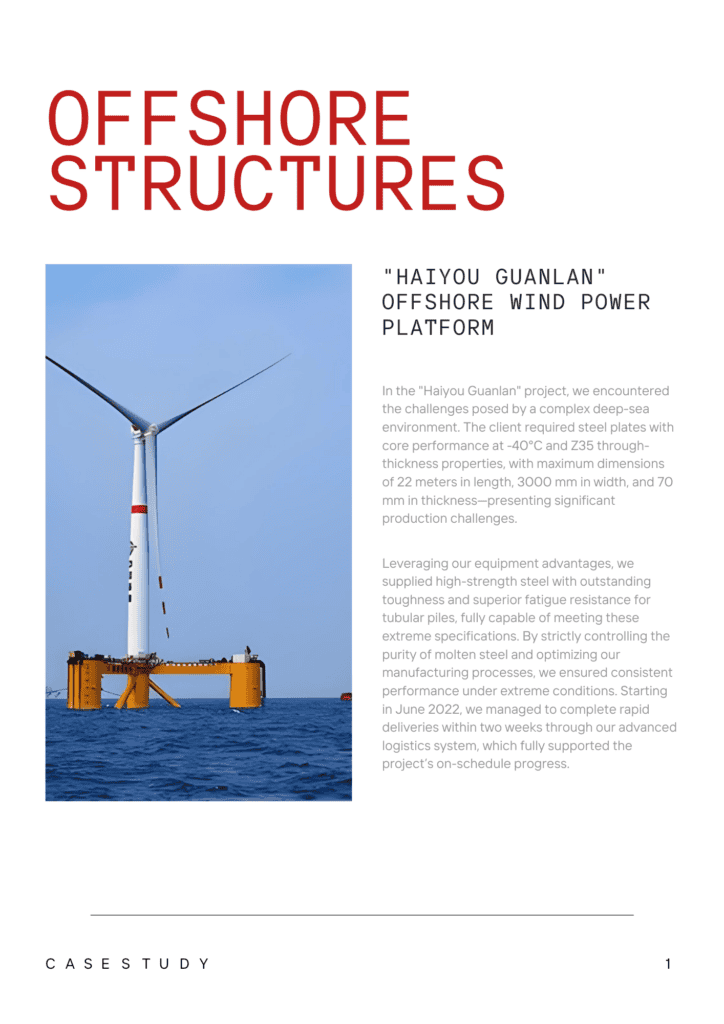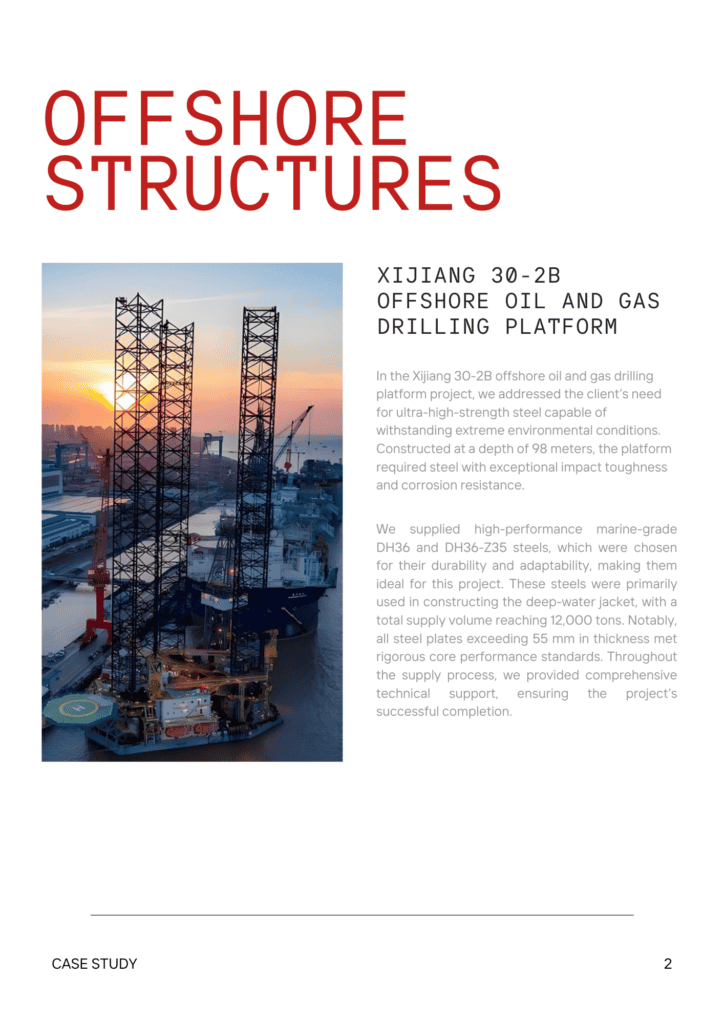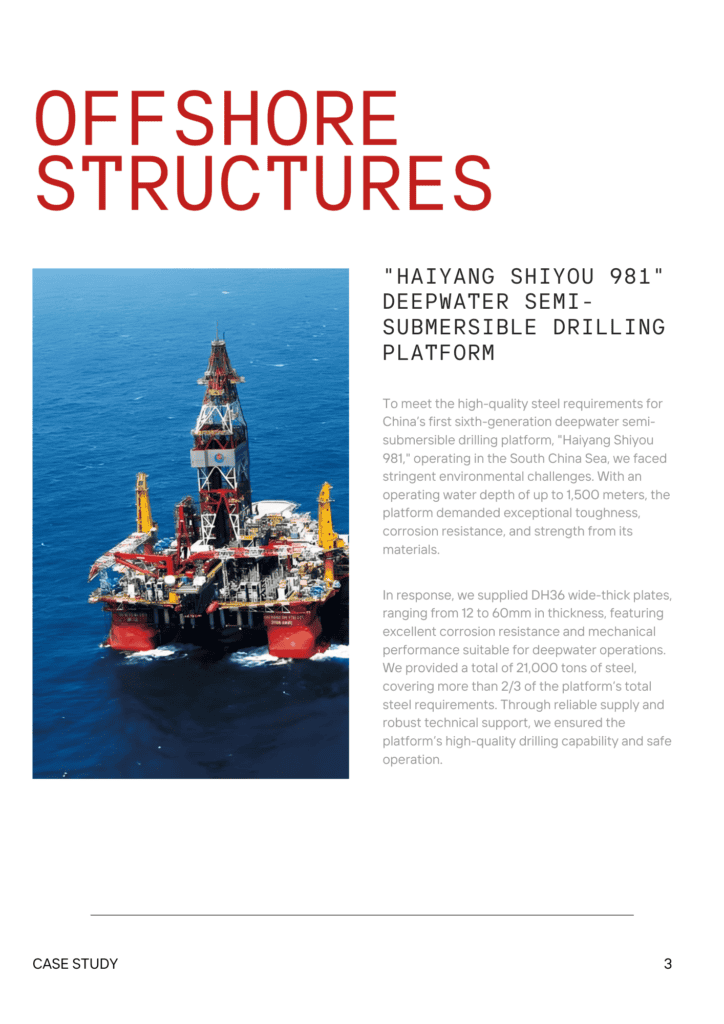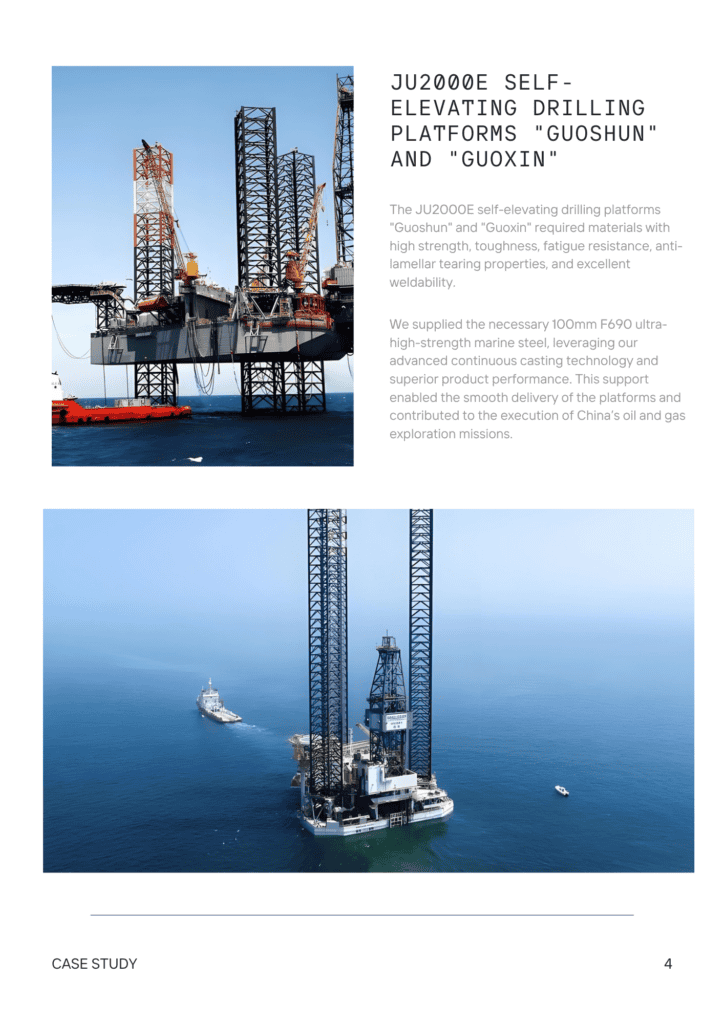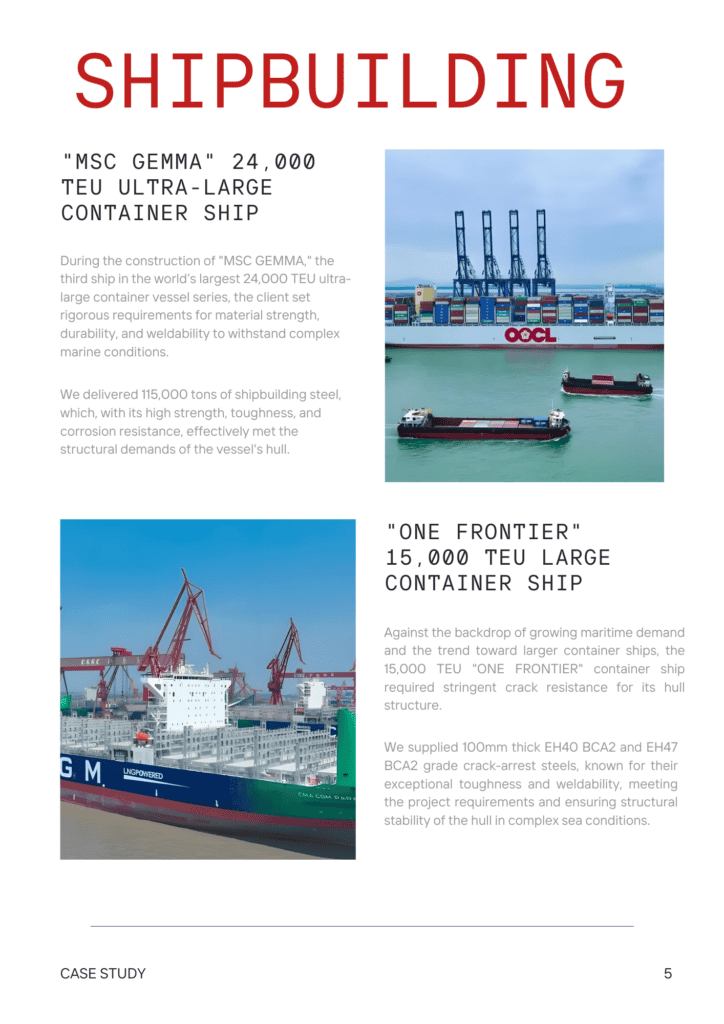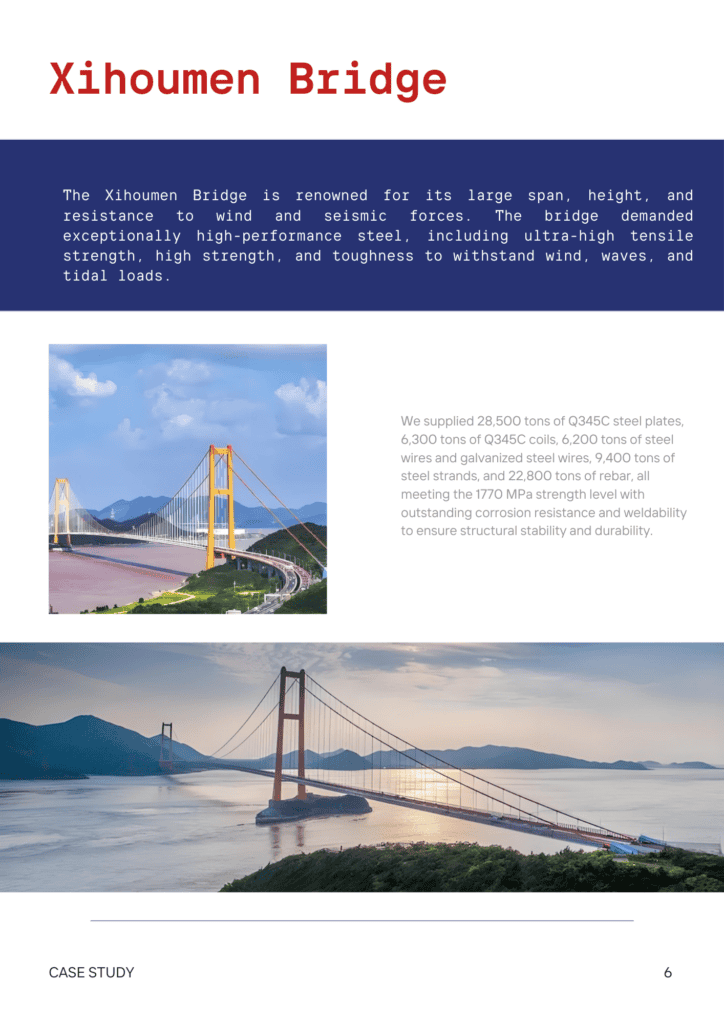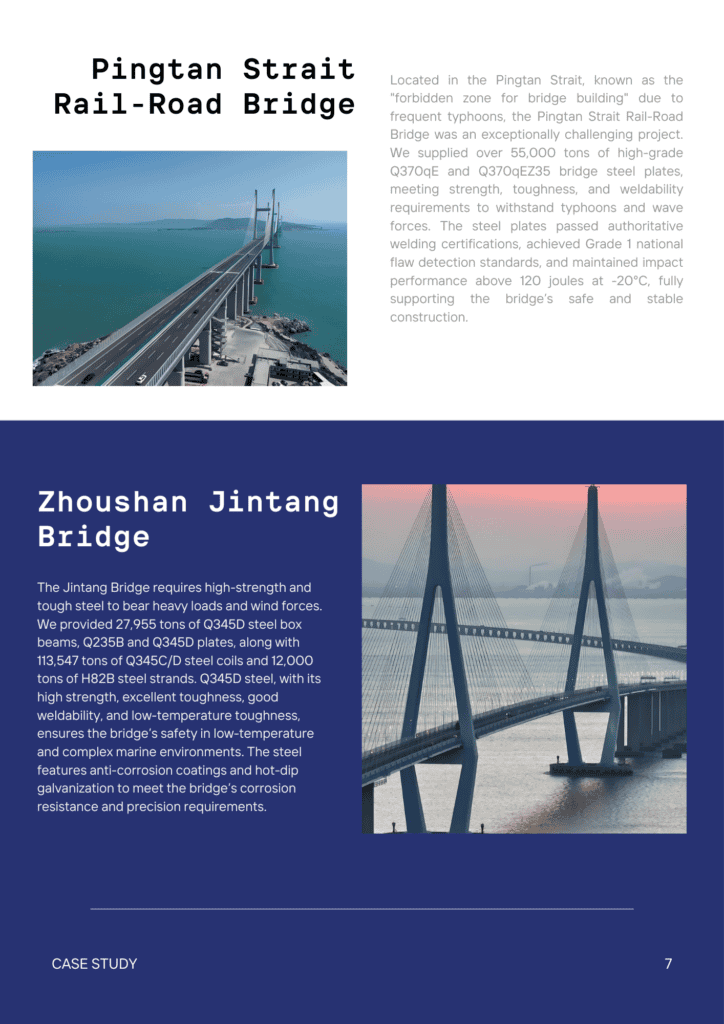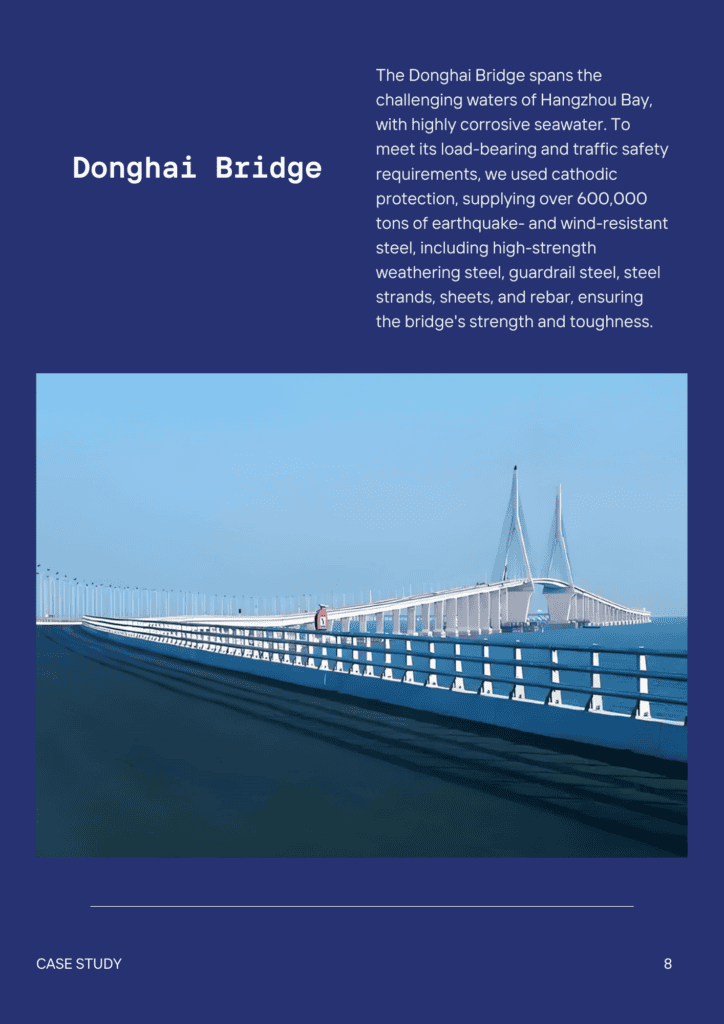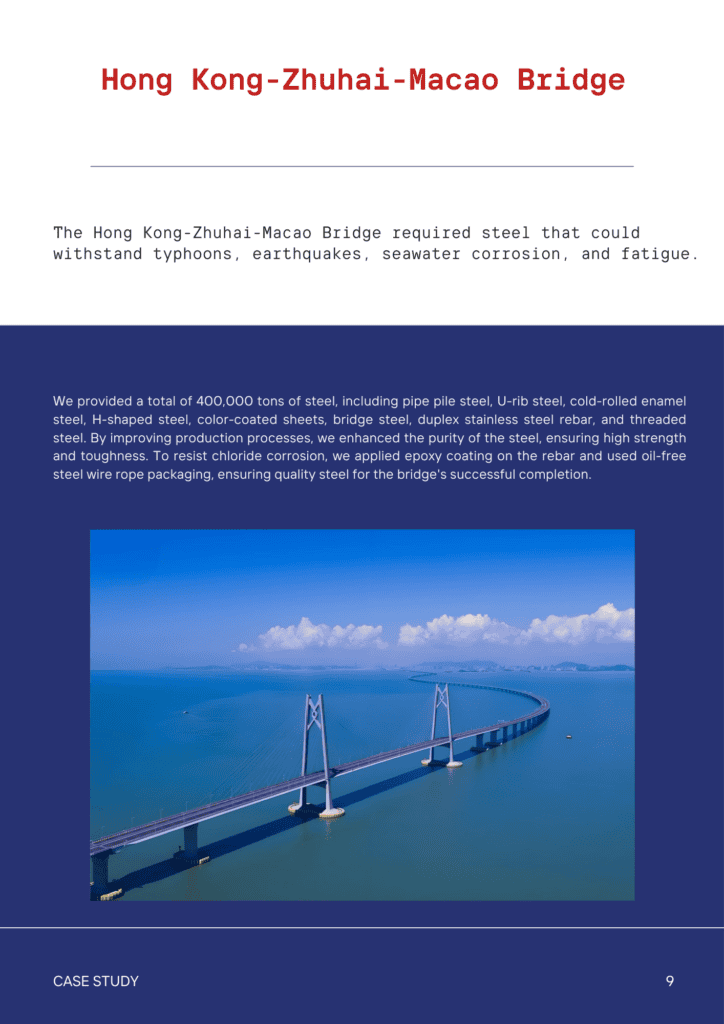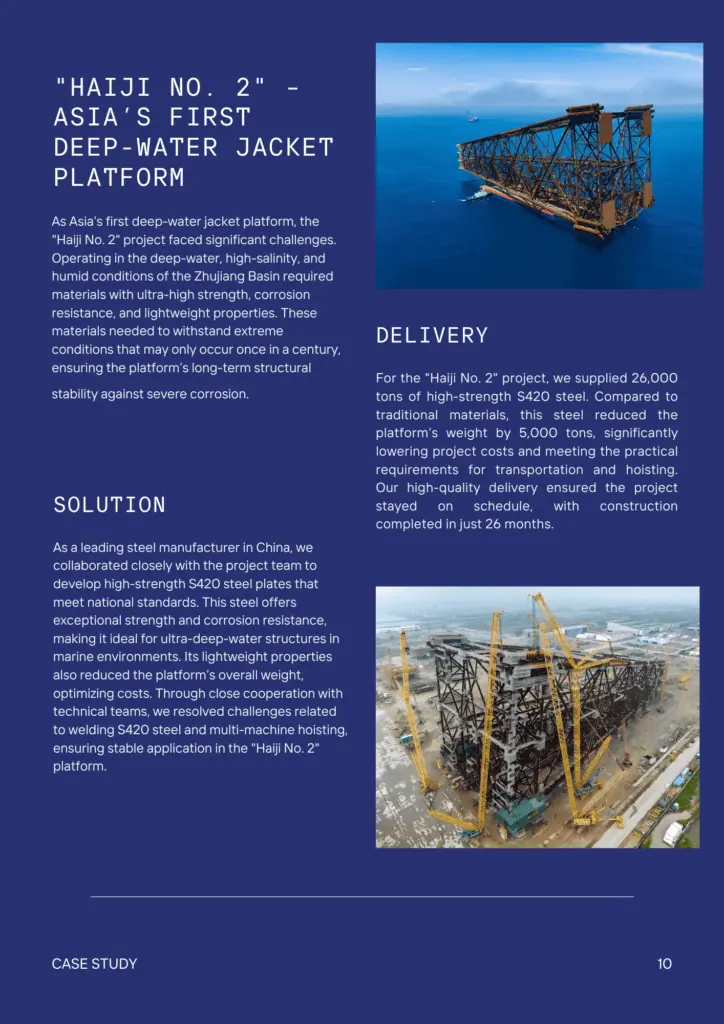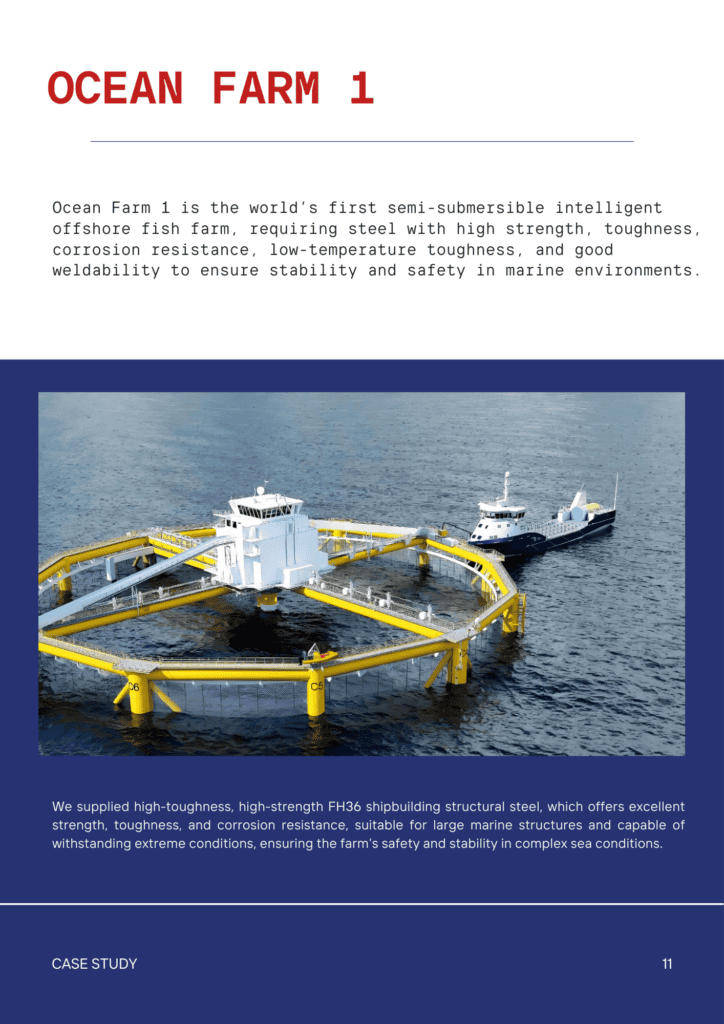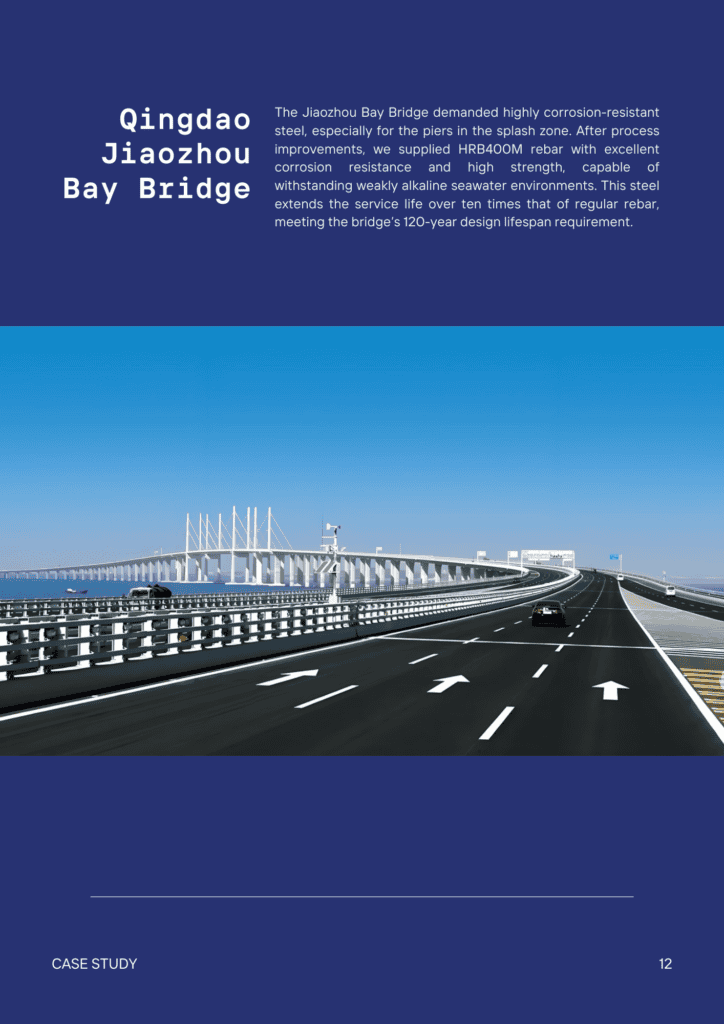Contents
Types of Stainless Steel: Properties, Grades and Applications
- John
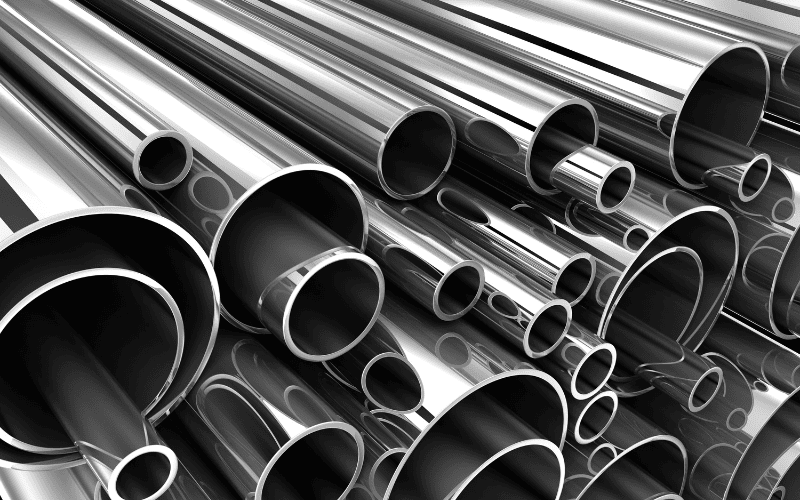
Stainless steel comes in various types, each designed to offer distinct properties and benefits. From high corrosion resistance to strength in extreme temperatures, these materials are essential across industries like construction, automotive, and aerospace. In this guide, we explore the unique characteristics, grades, and applications of the five main types of stainless steel to help you choose the best option for your project.
What are the Types of Stainless Steel?
There are 5 main types: Austenitic Stainless Steel, Ferritic Stainless Steel, Martensitic Stainless Steel, Duplex Stainless Steel, and Precipitation-Hardening (PH) Stainless Steel. Each type has different compositions and properties suitable for different industrial applications. Let’s explore them one by one.
Austenitic Stainless Steel
What Is Austenitic Stainless Steel?
Austenitic stainless steel, with a composition of about 70% iron, 16-26% chromium, and 10-22% nickel, is one of the 5 classes of stainless steel. It has a face-centered cubic crystalline structure, making it non-magnetic and not hardenable by heat treatment. It has good corrosion resistance and formability and is widely utilized in food processing, chemical, and nuclear industries.
What Are the Properties of Austenitic Stainless Steel?
Austenitic stainless steels are the most widely used, featuring an austenitic crystal structure similar to high-temperature iron. They typically have higher chromium content than other types and are generally non-magnetic.
- Corrosion Resistance: High chromium content forms a passive oxide layer that protects against corrosion, even in harsh environments like marine or industrial settings. This makes it highly resistant to rust, stains, and pitting.
- Strength and Toughness: Even though it’s across a wide temperature range, from cryogenic conditions to high heat, austenitic stainless steel maintains its strength and toughness. It can be work-hardened to further increase its strength, and it is suitable for applications requiring high durability.
- Formability: This steel is highly formable, allowing it to be easily shaped into complex forms without cracking or losing strength. It can be rolled, drawn, and bent into various shapes, making it ideal for manufacturing intricate components.
- Weldability: The non-magnetic nature and stable microstructure make austenitic stainless steel easily weldable. It does not require post-weld heat treatment to maintain its corrosion resistance, which simplifies the welding process and reduces costs.
- Non-Magnetic: Austenitic stainless steel is generally non-magnetic, but during cold working, part of its structure can transform into martensite, it may exhibit slight magnetism after processes like heavy forming or machining.
- Hygienic Properties: Its smooth surface and resistance to corrosion make it easy to clean and sterilize. This is critical in applications demanding strict cleanliness standards, such as the food processing and medical sectors.
- Thermal Stability: Austenitic stainless steel maintains its strength and resists becoming brittle even when exposed to high temperatures. This makes it ideal for use in high-temperature environments, such as furnace components and exhaust systems.
- Chemical Resistance: It withstands various chemicals, such as acids, alkalis, and chlorides, which makes it perfect for chemical processing and storage applications.
- Low Maintenance: Austenitic stainless steel requires minimal maintenance due to its corrosion resistance and durability, which helps reduce long-term costs in various applications.
- Recyclability: Austenitic stainless steel is fully recyclable, promoting sustainability and minimizing environmental impact.
What’s more, austenitic stainless steel has a melting point range of 1371-1454°C (2500-2650°F), making it suitable for high-temperature applications.
What Are the Grades of Austenitic Stainless Steel?
Common stainless steel grades for austenitic stainless steel are 200 series and 300 series, each with unique properties for different applications.
- 201: Contains 16-18% chromium, 3.5-5.5% nickel, and 5.5-7.5% manganese. Known for its high work-hardening rate and excellent toughness at low temperatures. It is commonly utilized in the production of kitchen utensils, sinks, and various architectural projects.
- 202: Similar to 201 but with slightly higher manganese and lower nickel content. Offers good strength and corrosion resistance. Used in kitchen equipment, restaurant equipment, and automotive trim.
- 304: It Contains 18-20% chromium and 8-10.5% nickel. This grade is the most widely used, renowned for its exceptional corrosion resistance and ease of formability. It is capable of withstanding various temperatures. It is frequently used in kitchen equipment, storage tanks, and piping.
- 316: Contains 16-18% chromium, 10-14% nickel, and 2-3% molybdenum. The addition of molybdenum makes it better resist pitting and crevice corrosion, especially in chloride environments. It also provides increased creep resistance, stress-to-rupture, and tensile strength at higher temperatures. It is used in marine environments, chemical processing, and medical devices.
- 310: It Contains 24-26% chromium and 19-22% nickel. The increased chromium and nickel content improves its oxidation resistance at elevated temperatures. It maintains its strength and toughness at temperatures up to 1150°C (2100°F). It is utilized for high-temperature applications such as furnace parts, heat exchangers, kiln linings, and combustion chambers. Also used in power generation and thermal processing industries.
- 303: Similar to 304 but with added sulfur (0.15-0.35%). It has enhanced machinability due to added sulfur, which improves its ease of cutting and machining. However, this addition slightly reduces its corrosion resistance compared to 304. It is used in manufacturing screws, bolts, nuts, and other components requiring extensive machining. It is Ideal for high-speed machining operations.
- 308: Typically contains about 20% chromium and 10% nickel, offering excellent corrosion resistance, especially in chloride environments. The balanced chromium and nickel content reduces the risk of thermal cracking during welding, giving it good weldability. It is widely used in construction, chemical processing, and food industries.
What Are the Applications of Austenitic Stainless Steel?
Austenitic stainless steels are utilized in a variety of applications, including kitchen equipment, medical devices, industrial machinery, and architectural structures.
- Kitchen Equipment: Sinks, cookware, cutlery, and food processing equipment made from 304 and 316 grades as they are corrosion-resistant and easy to clean.
- Medical Devices: Surgical instruments, implants, and medical equipment made from 316 due to its biocompatibility and resistance to sterilization processes.
- Industrial Equipment: Storage tanks, piping, heat exchangers, and chemical processing equipment made from 304 and 316 for their resistance to corrosive chemicals.
- Architectural Structures: Structural components, cladding, handrails, and decorative elements are made from various grades for their strength, durability, and aesthetic appeal.
- Automotive Industry: Exhaust systems, catalytic converters, and trim components made from 304 and 321 for their high-temperature resistance and corrosion resistance.
- Aerospace Industry: Jet engine parts, aircraft frames, and structural components made from 310 and 321 for their high-temperature stability and strength.
- Food and Beverage Industry: Production and storage equipment, including brewing tanks and dairy processing equipment, made from 304 and 316 for their sanitary properties and corrosion resistance.
Ferritic Stainless Steel
What Is Ferritic Stainless Steel?
Ferritic stainless steel, composed of about 85% iron and 10-30% chromium, has low nickel content, making it more cost-effective than other types. Its body-centered cubic structure makes it magnetic and not hardenable by heat treatment. It provides good corrosion resistance in mild environments and is mainly used in automotive exhaust systems, industrial equipment, and kitchen utensils. Typically processed through cold rolling, ferritic stainless steel includes standard and stabilized variants.
What Are the Properties of Ferritic Stainless Steel?
Ferritic stainless steel is renowned for its good corrosion resistance, high strength, magnetic properties, and excellent thermal conductivity.
- Corrosion Resistance: It possesses excellent corrosion resistance, especially in oxidizing environments, but it is less resistant to chloride-induced pitting and crevice corrosion compared to austenitic grades.
- Strength and Ductility: It offers high strength and moderate ductility.
- Thermal Conductivity: Higher thermal conductivity than austenitic stainless steels, making it ideal for heat exchangers and other thermal applications.
- Magnetic Properties: Ferritic stainless steels are magnetic, which can be beneficial or a drawback depending on the application.
- Weldability: Generally has poorer weldability compared to austenitic grades, requiring careful control of welding conditions to avoid brittleness.
- Cost-Effectiveness: High chromium content but low or no nickel makes it more affordable than austenitic steels. Suitable for applications needing moderate corrosion resistance and magnetic properties without the high cost of nickel.
Furthermore, ferritic stainless steel has a melting point range of 1425-1510°C (2600-2750°F), making it ideal for applications needing high thermal conductivity and minimal thermal expansion, such as automobile exhaust systems and industrial equipment.
What Are the Grades of Ferritic Stainless Steel?
The grades for ferritic stainless steels and martensitic stainless steels are 400 series. Among the 400 series, 409, 430, 434, and 446 are grades of ferritic stainless steel.
- 409: Contains 10.5-11.75% chromium and is one of the most cost-effective grades. It has strong oxidation resistance and is often employed in automotive exhaust systems.
- 430: Contains 16-18% chromium and is known for its good corrosion resistance and formability. It is widely used in kitchen appliances, automotive trim, and architectural applications.
- 434: Contains 16-18% chromium and 0.75-1.25% molybdenum, providing better corrosion resistance, especially in chloride environments. Used in automotive components and appliances.
- 446: Contains 23-27% chromium and offers excellent resistance to high-temperature oxidation and corrosion. Commonly used in furnace components, heat exchangers, and boiler components.
What Are the Applications of Ferritic Stainless Steel?
Ferritic stainless steel is used in the automotive industry, kitchen equipment, industrial equipment, architectural structures, and domestic appliances.
- Automotive Industry: Widely used in exhaust systems (409), automotive trim, and structural components due to its good corrosion resistance and high strength.
- Kitchen Equipment: Used in kitchen sinks, countertops, and appliances (430) for its aesthetic appeal and ease of cleaning.
- Industrial Equipment: Ideal for heat exchangers, furnace parts, and boilers (446) due to its excellent thermal conductivity and strong oxidation resistance.
- Architectural Structures: Employed in decorative and structural elements for buildings, such as cladding and handrails, due to its good formability and corrosion resistance.
- Domestic Applications: Used in washing machine drums, dishwashers, and indoor panels for its moderate cost and sufficient corrosion resistance.
Martensitic Stainless Steel
What Is Martensitic Stainless Steel?
Martensitic stainless steel, composed of 70-80% iron, 12-18% chromium, and 0.1-1.2% carbon, is less common among the 5 stainless steel types. It’s valued for its high strength, hardness, and magnetic properties, but has weaker corrosion resistance and weldability. With a body-centered tetragonal structure, it can be hardened through heat treatment. Mainly used in cutlery, surgical tools, and industrial blades, martensitic stainless steel is processed through hot rolling and includes high-carbon and low-carbon variants.
What Are the Properties of Martensitic Stainless Steel?
Martensitic stainless steel has high strength, hardness, wear resistance, moderate corrosion resistance, and magnetic properties.
- High Strength and Hardness: Because it contains high carbon, martensitic stainless steel can be heat-treated to achieve high strength and hardness. This is ideal for applications requiring durability and wear resistance.
- Moderate Corrosion Resistance: Offers good resistance to corrosion in mild environments but is less resistant compared to austenitic and ferritic grades.
- Wear Resistance: Because it can be hardened and tempered, it is suitable for cutting tools and machinery parts.
- Magnetic Properties: Martensitic stainless steels are magnetic, which can be beneficial in certain applications.
- Heat Treatability: Heat treatment procedures like as quenching and tempering can be used to harden the material and produce desirable mechanical qualities.
Additionally, the melting point of martensitic stainless steel ranges from 1400 to 1450°C (2550 to 2650°F), making it suitable for applications requiring high strength and hardness.
Heat Treatment Steps for Martensitic Stainless Steel
Martensitic stainless steel undergoes a multi-step heat treatment process:
- Austenitizing: Heat to 950-1050°C (1740-1920°F) to form austenite, preparing the steel for hardening.
- Quenching: Rapidly cool the steel, typically in air or oil, to form martensite and achieve high hardness.
- Tempering: Reheat to 150-600°C (300-1100°F) to adjust hardness and toughness and reduce brittleness.
These steps optimize strength and durability based on application needs.
What Are the Grades of Martensitic Stainless Steel?
Several 400 series stainless steel, such as 410 and 420, are grades for martensitic stainless steel.
- 410: Contains 11.5-13.5% chromium and up to 0.15% carbon. It is the most commonly used martensitic grade, recognized for its excellent hardness and corrosion resistance. It is widely used in cutlery, steam and gas turbine blades, and kitchen utensils.
- 420: Contains 12-14% chromium and 0.15-0.40% carbon. Known for its higher ha valves.
- 440A, 440B, 440C: These grades contain 16-18% chromium and varying carbon content (0.6-1.2%). They are known for their high hardness and wear resistance, with 440C being the hardest and most wear-resistant. Used in high-quality cutlery, bearings, and valve components.
- 431: Contains 15-17% chromium and 0.2-0.4% carbon. Provides an excellent combination of corrosion resistance, toughness, and strength. Used in aircraft parts, pump shafts, and marine equipment.
What Are the Applications of Martensitic Stainless Steel?
Martensitic stainless steel is used in applications like cutlery, medical instruments, industrial equipment, aerospace components, and automotive parts.
- Cutlery and Blades: Used in knives, scissors, and surgical instruments due to its hardness and sharp edge retention.
- Medical Instruments: Used in surgical tools and dental instruments for its strength and ability to be sterilized.
- Industrial Equipment: Ideal for pump shafts, valve components, and bearings where high strength and wear resistance are needed.
- Aerospace Industry: Used in turbine blades and other high-stress components due to its ability to withstand high mechanical loads.
- Automotive Industry: Used in components such as shafts, gears, and fasteners that require high strength and wear resistance.
Duplex Stainless Steel
What Is Duplex Stainless Steel?
Duplex stainless steel is a type of stainless steel composed of approximately 50-70% iron, 22-25% chromium, and 5-7% nickel. With a mixed crystalline structure of both austenite and ferrite, it provides superior strength and exceptional corrosion resistance. Duplex stainless steel is applied in chemical processing, oil and gas exploration, and marine environments. It is processed through hot rolling methods. Subgroups for duplex stainless steel are lean duplex, standard duplex, and super duplex variants.
What Are the Properties of Duplex Stainless Steel?
Duplex stainless steel is recognized for its remarkable strength, outstanding corrosion resistance, resistance to stress corrosion cracking, good weldability, high toughness, and moderate magnetic properties.
- High Strength: Duplex stainless steel has roughly double the yield strength of austenitic stainless steel. This is suitable for high-stress applications.
- Excellent Corrosion Resistance: The high chromium and molybdenum provide good resistance to pitting, crevice corrosion, and general corrosion in harsh situations.
- Stress Corrosion Cracking Resistance: The ferritic phase in the microstructure improves resistance to stress corrosion cracking, especially in chloride-containing environments.
- Good Weldability: Duplex stainless steel can be welded using standard techniques, but it is crucial to manage the heat input and cooling rate carefully to preserve its balanced microstructure.
- High Toughness and Ductility: It offers good toughness and ductility, although not as high as austenitic stainless steel. It performs well no matter if the temperature is high or low.
- Thermal Conductivity: Higher thermal conductivity and lower thermal expansion compared to austenitic stainless steels, making it suitable for applications involving temperature fluctuations.
- Magnetic Properties: Due to its ferritic phase, duplex stainless steel has moderate magnetic properties, which is higher than austenitic stainless steels but lower than fully ferritic steels.
The melting point of duplex stainless steel typically ranges from 1350 to 1400°C (2460 to 2550°F), making it suitable for high-stress applications.
What Are the Grades of Duplex Stainless Steel?
- 2205: The most widely used duplex grade, containing 22% chromium, 5-6% nickel, and 3% molybdenum. It has great corrosion resistance and high strength, being suitable for chemical processing, oil and gas exploration, and marine applications.
- 2507 (Super Duplex): Contains 25% chromium, 7% nickel, and 4% molybdenum, providing even greater strength and corrosion resistance than 2205. It is used in extremely corrosive environments, such as offshore oil and gas production and chemical processing.
- 2304: Contains 23% chromium and 4% nickel, with no molybdenum. It offers good corrosion resistance and strength while being more affordable than 2205. Used in structural applications, storage tanks, and water treatment plants.
- 2101 (Lean Duplex): Contains lower amounts of nickel and molybdenum, making it a cost-effective alternative with good mechanical properties and corrosion resistance. Used in architectural structures, water heaters, and storage tanks.
What Are the Applications of Duplex Stainless Steel?
Duplex stainless steel is used in the chemical and petrochemical industry, oil and gas industry, marine industry, construction and architecture, water treatment plants, and pulp and paper industry.
- Chemical and Petrochemical Industry: It is utilized in process equipment, storage tanks, and piping systems because of its ability to withstand aggressive chemicals and high temperatures.
- Oil and Gas Industry: Employed in offshore platforms, pipelines, and processing equipment for its strength and resistance to corrosion in harsh marine environments.
- Marine Industry: Used in shipbuilding, desalination plants, and marine hardware because of its excellent resistance to seawater corrosion.
- Construction and Architecture: It is employed in bridges, building facades, and various structural applications where high strength and durability are essential.
- Water Treatment Plants: Employed in desalination and water treatment facilities for its ability to resist corrosion and biofouling.
- Pulp and Paper Industry: Ideal for digesters, bleach washers, and other equipment that encounter corrosive chemicals and high temperatures.
Precipitation Hardening Stainless Steel
What is Precipitation Hardening Stainless Steel?
Precipitation Hardening Stainless Steel, also called PH stainless steel, is a stainless steel composed of approximately 70% iron, 17% chromium, 4% nickel, and small amounts of aluminum and copper, forming a solid metal material. It has high strength, strong resistance to corrosion, and notable toughness. It is primarily used in the aerospace, petrochemical, and medical device industries. This steel is processed through solution treatment and aging treatment. Precipitation Hardening Stainless Steel is mainly classified into four categories: martensitic, semi-austenitic, welding, and austenitic.
What Are the Properties of Precipitation Hardening Stainless Steel?
Precipitation-hardening stainless steel has high strength, hardness, good corrosion resistance, good ductility, toughness, weldability, and formability.
- High Strength and Hardness: The heat treatment process significantly enhances the strength and hardness of the steel, making it ideal for high-stress applications.
- Good Corrosion Resistance: It offers good to excellent corrosion resistance, comparable to austenitic stainless steels, making it ideal for applications in harsh, corrosive conditions.
- Good Ductility and Toughness: Despite its exceptional strength, PH stainless steel maintains excellent ductility and toughness, which is critical for structural applications.
- Weldability: It can be welded with standard techniques, but post-weld heat treatment is often necessary to restore its properties.
- Formability: It can be formed and machined in its softened state and then hardened through heat treatment to achieve the desired properties.
The melting point of precipitation-hardening stainless steel typically ranges from 1400 to 1450°C (2550 to 2650°F), making it suitable for high-stress applications.
What Are the Grades of Precipitation Hardening Stainless Steel?
There are several grades of precipitation-hardening stainless steel, each tailored for specific applications:
- 17-4 PH (UNS S17400): Contains 17% chromium, 4% nickel, and 4% copper. It is the most widely used PH stainless steel, known for its excellent strength, hardness, and corrosion resistance. Used in aerospace, chemical processing, and marine environments.
- 15-5 PH (UNS S15500): Similar to 17-4 PH but with higher toughness. Contains 15% chromium, 5% nickel, and additional copper. Used in aerospace components, pressure vessels, and high-performance shafts.
- 13-8 Mo (UNS S13800): Contains 13% chromium, 8% nickel, and 2% molybdenum. Known for its superior toughness and stress corrosion cracking resistance. Used in aerospace, petrochemical, and nuclear applications.
- PH 13-8 Mo (UNS S13800): Known for high strength, toughness, and excellent stress corrosion cracking resistance. Contains 13% chromium, 8% nickel, and 2% molybdenum. Used in aerospace, nuclear, and chemical industries.
- 17-7 PH (UNS S17700): Contains 17% chromium, 7% nickel, and aluminum. Known for its high strength and good formability. Used in aerospace components, springs, and washers.
What Are the Applications of Precipitation Hardening Stainless Steel?
Precipitation-hardening stainless steel is used in aerospace components, automotive parts, industrial equipment, medical devices, chemical processing equipment, and marine applications.
- Aerospace Industry: Used in aviation components, turbine blades, and landing gear because to its excellent strength-to-weight ratio and corrosion resistance.
- Automotive Industry: Employed in high-performance engine components, transmission parts, and exhaust systems for its durability and resistance to wear.
- Industrial Equipment: Ideal for manufacturing tools, fasteners, and springs that require high strength and resistance to fatigue.
- Medical Devices: Used in surgical instruments, orthopedic implants, and dental tools for its biocompatibility and ability to maintain sharp edges.
- Chemical Processing: Suitable for equipment exposed to corrosive chemicals and high temperatures, such as valves, pumps, and heat exchangers.
- Marine Applications: Used in propeller shafts, fasteners, and other components exposed to saltwater environments for its excellent corrosion resistance.
Effects of Adding Different Materials to Different Types of Steel
Different types of stainless steel are created by adding alloying elements and using various production techniques. Below is a simple explanation of how each chemical element impacts performance.
- Chromium (Cr): Improves corrosion resistance, essential for stainless steel.
- Nickel (Ni): Enhances formability and corrosion resistance, used in austenitic steel.
- Molybdenum (Mo): Increases pitting and crevice corrosion resistance, beneficial in chloride-rich environments.
- Carbon (C): Adds strength and hardness but can reduce corrosion resistance at high levels.
- Nitrogen (N): Improves strength and localized corrosion resistance, particularly in duplex steels.
The composition ratio of each element will affect the performance of different types of stainless steel.
Comparing Localized Corrosion in Different Types of Stainless Steel
Pitting corrosion, crevice corrosion, and stress corrosion cracking are different among the five types of stainless steel, affecting their performance in specific environments. Here is a comparison of their local corrosion trends:
Austenitic Stainless Steel (304)
- Feature: 18% chromium, 8% nickel.
- Localized Corrosion: Prone to pitting in chlorides.
Ferritic Stainless Steel (430)
- Feature: Chromium, no nickel.
- Localized Corrosion: Susceptible to pitting.
Martensitic Stainless Steel (410)
- Feature: Higher carbon.
- Localized Corrosion: Prone to pitting.
Duplex Stainless Steel (2205)
- Feature: Balanced phases.
- Localized Corrosion: Excellent pitting resistance.
Precipitation-Hardening Stainless Steel (17-4 PH)
- Feature: Strengthened by heat treatment.
- Localized Corrosion: Can pit in harsh conditions.
Each type performs differently in localized corrosion based on its composition, and you can choose to increase the chromium, molybdenum, and nitrogen content to provide better resistance to pitting corrosion.
Which is better, 304 or 316 stainless steel?
If you need stainless steel for general kitchen equipment, storage tanks, or piping, 304 stainless steel is ideal due to its affordability and excellent corrosion resistance. However, for marine environments, chemical processing, or medical devices, 316 stainless steel is better because it contains molybdenum, which provides superior resistance to pitting and crevice corrosion, especially in chloride environments.
Further Reading
304 vs 316 Stainless Steel
Which is better, 304 or 420 stainless steel?
For kitchen equipment, storage tanks, and architectural structures, 304 stainless steel is the better choice because of its excellent corrosion resistance and formability. On the other hand, 420 stainless steel is more suitable for cutlery, surgical instruments, and industrial blades, as it offers higher hardness and wear resistance, though it has less corrosion resistance compared to 304.
How to identify types of stainless steel?
You can identify types of stainless steel through several methods.
The magnet test is useful: austenitic stainless steels like 304 and 316 are generally non-magnetic, while ferritic and martensitic steels like 430 and 420 are magnetic. The spark test involves grinding the steel and observing the sparks; different stainless steels produce distinct spark patterns. Chemical tests, such as using nitric acid, can help identify types based on their reactions. For precise identification, professional methods like X-ray fluorescence (XRF) analyzers can determine the exact composition of the stainless steel.
What Grade of Stainless Steel Will Not Rust?
No stainless steel is completely rust-proof, but stainless steel grades like 304 and 316 are highly resistant to rust due to their high chromium and nickel content. 316, with added molybdenum, offers superior rust resistance, especially in harsh or marine environments, these grades provide excellent protection against corrosion.
Conclusion
Stainless steel is versatile and essential across many industries. Each type—whether austenitic, ferritic, martensitic, duplex or precipitation hardening—has unique strengths. Choose the right one based on your needs, whether it’s for durability, corrosion resistance, or strength.
Ready to start your next project? Explore these different types of stainless steel and find the one that best suits your requirements. Act now and leverage the best of stainless steel!
- Stainless Steel Grades
- 300 Series Stainless Steel
- 303 Stainless Steel
- 304 Stainless Steel
- 305 Stainless Steel
- 308 Stainless Steel
- 316 Stainless Steel
- 316N Stainless Steel
- 409 Stainless Steel
- 410 Stainless Steel
- 416 Stainless Steel
- 420 Stainless Steel
- 430 Stainless Steel
- 410HT And 410L Stainless Steels
- 410S Stainless Steel
- 440 Stainless Steel
- 436 Stainless Steel
- 301 Stainless Steel
- 201 Stainless Steel
- 202 Stainless Steel
- 444 Stainless Steel
- 405 Stainless Steel
- 302 Stainless Steel
- 309 Stainless Steel
- 314 Stainless Steel
- 321 Stainless Steel
- 347 Stainless Steel
- 408 Stainless Steel
- 422 Stainless Steel
- 431 Stainless Steel
- 434 Stainless Steel
- 414 Stainless Steel
- 430FR Stainless Steel
- 13-8 PH Stainless Steel
- 317 | 317L Stainless Steel
- 616 Stainless Steel
- 630 Stainless Steel
- 904L Stainless Steel
- A2 Stainless Steel
- 304 vs 304L Stainless Steel
- 304 VS 316 Stainless Steel
- 304 vs 409 Stainless Steel
- 304 vs 430 Stainless Steel
- 410 Stainless Steel vs 304
- 18/0 vs 18/10
- 18/0 Stainless Steel
- 18/8 Stainless Steel
- 18/10 Stainless Steel
Comparisons


